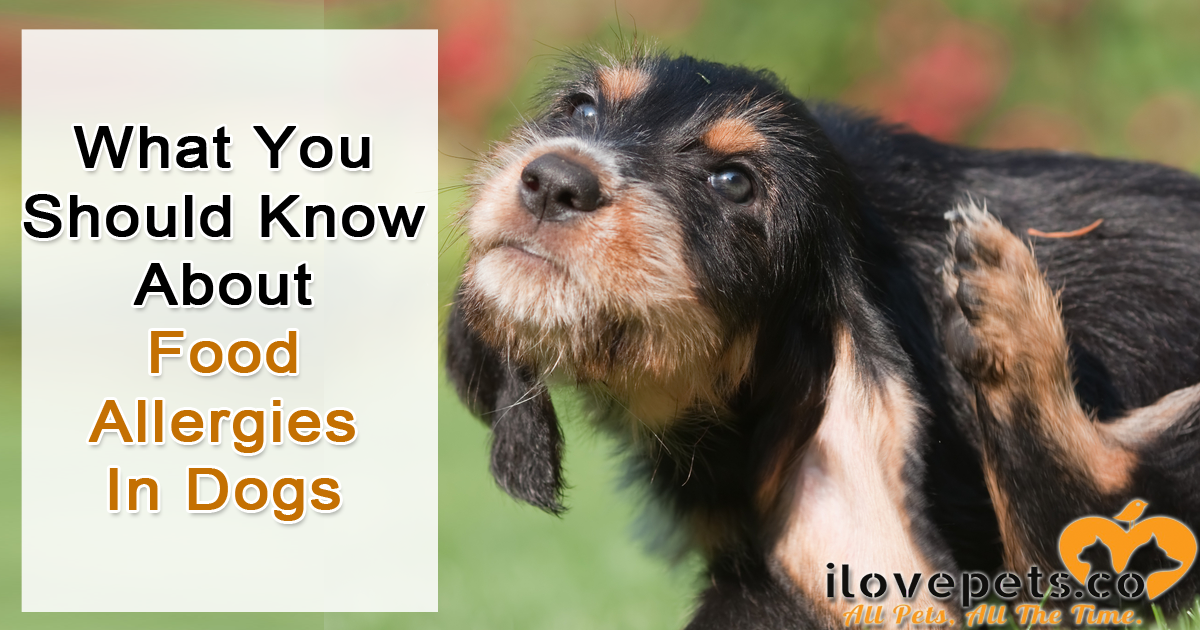
Food allergies in dogs are incredibly common, yet few dog owners realize that their dogs are silently suffering.
We mistakenly think it’s normal when our dogs spend hours each night licking their paws. We don’t take notice when our dogs give off strange odors. It’s not until their skin is inflamed, scabbed and flaky that we begin to worry.
A dog is not supposed to be itchy and smelly. Dogs shouldn’t be scratching all day long, and they shouldn’t lick their paws all night.
Dogs also shouldn’t suffer from frequent gas, vomiting and soft stools.
If you suspect your dog has food allergies, you can learn what could be triggering their flare-ups. You can feed them a better diet that will help them return to a happy, healthy, itch-free life.
Signs Of Food Allergies In Dogs
- Excessive gas
- Recurring ear infections, wax buildup or itchy ears
- Paw licking and chewing
- Hot spots – red, hairless spots on your dog’s tail, stomach, that appear when they’ve been chewing the affected area
- Hair loss, bald patches
- A yeasty odor – may smell like popcorn, bread or corn chips
- Excessive itching
- Lip licking, gagging, obsessive licking of hands, bed sheets and other objects – all signs of nausea
These symptoms can also be signs of other conditions. It’s best to speak with your vet to rule out other illnesses.
You can get an allergy test from your vet to see what might be triggering your dog’s allergies. However, these tests are not always conclusive. Many dogs who are shown to be allergic to chicken will only be unable to tolerate it in kibble, but eventually are able to eat fresh chicken without an allergic reaction.
While this article is no substitute for advice from your vet, treating allergies can take weeks. Most of what you’ll do to help your dog happens at home – it’s all about what you put in the dog bowl.
Why Dogs Become Allergic To Their Food
Your dog can become allergic to a grain, vegetable or protein in their food. The most common food allergies in dogs are chicken, wheat, soy, corn, rice, dairy and beef.
Feeding your dog the same kibble each day can actually cause them to become allergic to it. To prevent allergies, change your dog’s food at least once every 3 months. Make sure their new food is made with a different protein. If their old food was made with chicken, try beef or fish next time. Always check the label – some foods are made with several different kinds of proteins.
The new food should be a change in other ingredients. If the old food is made with chicken and rice, the new food should be made with fish and sweet potato, for example.
If your dog is already experiencing allergy symptoms, it might not be enough to simply switch their kibble. Feeding a fresh, limited ingredient diet will make it more obvious as to what ingredient is causing flare-ups, and they’ll feel better sooner.
Relieving The Itch
Food allergies can cause your dog to have an overgrowth of yeast on their skin, which causes the redness, itching, yeasty odor and ear infections. You’ll need to keep your dog clean and dry to control the yeast while you eliminate allergens from their diet.

Coconut oil is a powerful anti-inflammatory that can be used internally and externally to relieve your dog’s symptoms. Warm up a spoonful in your hands until it becomes a liquid, then smooth it over your dog’s dry, itchy skin. Mix a small amount into all of your dog’s meals, about a teaspoon per ten pounds of body weight.
Moosh Natural Dog Shampoo. Anti-Bacterial – Anti-Fungal- Anti-Itch
Wash your dog with an anti-fungal shampoo, preferably one that contains natural ingredients. You can wash your dog twice a week to keep yeast under control. After a few weeks on a better diet, your dog will most likely stop needing frequent baths.
What NOT To Do When Your Dog Has Food Allergies
There’s a few steps you might take to relieve your dog’s symptoms that can actually make their condition worse.
Do not use a shampoo that contains oatmeal. Oatmeal shampoos were meant to stop itching, but they contain grains that actually feed yeast and will make your dog even itchier shortly after their bath.
Also, avoid buying kibble that claims to be hypoallergenic, or specially made for pets with allergies. An animal can have an allergic reaction to anything, so a food that is hypoallergenic to one dog might cause flare-ups in another. Many prescription and specialty kibbles contain grains like corn that can make your dog feel worse.
Your vet may prescribe steroids to manage your dog’s allergic reactions. Unless your dog’s condition is severe, you should avoid giving them steroids. Steroids suppress your dog’s immune system response, but do not treat the underlying problem. Steroids can have side effects, and may even cause aggression and anxiety.
What To Feed Your Dog
If you suspect your dog is allergic to their food, discontinue feeding it immediately. You might be able to relieve their symptoms by switching to a very different kibble. Your new kibble should be grain-free and made with a high quality protein. It’s best to try a protein that is totally new to them, like duck, rabbit or bison.
Wellness is a trusted dog food brand with a limited ingredient line of kibble and canned food. If your dog normally eats chicken or beef foods, this salmon and potato formula would be an excellent choice.
Wellness Simple Natural Grain Free Dry Limited Ingredient Dog Food, Salmon & Potato, 24-Pound Bag
A fresh food diet is optimal for relieving allergies, but it’s not easy for everyone. You have to make sure the diet is balanced and provides all of the nutrients your dog needs. If you were to just feed your dog chicken breasts, they would develop a calcium deficiency and could suffer long-term health effects. A high quality kibble is better than a bad fresh diet.
The elimination diet from The Honest Kitchen is easy to follow. It uses ingredients easily found at your grocery store.
It’s not complete for everyday feeding, but it will support your dog’s health for a few weeks until their allergies clear up.
Stella & Chewy’s Freeze-Dried Raw Stella’s Super Beef Dinner Patties Dog Food, 15 oz. bag
You can also try a homemade, or pre-made frozen or freeze dried raw diet. No matter what you decide to feed your dog, make sure to allow a few weeks to see changes, and stick to just a few ingredients at a time. Trying a whole bunch of new things will make it hard to figure out what works and what does not.
Do you have a dog food allergy story? Tell us about it in the comments!
SHARE this article on your favorite social media outlets:










Excellent tips! You are so right about paying attention to the pet’s unusual behavior especially licking the paws for a long time, that might look cute and normal but as you very rightly put it, this is something to worry about and a visit to the vets is the must.
[…] cause an allergic response. Grass and pollen are common environmental allergies. Some dogs develop allergies to proteins in their food, especially if they are fed one variety of kibble for a long […]